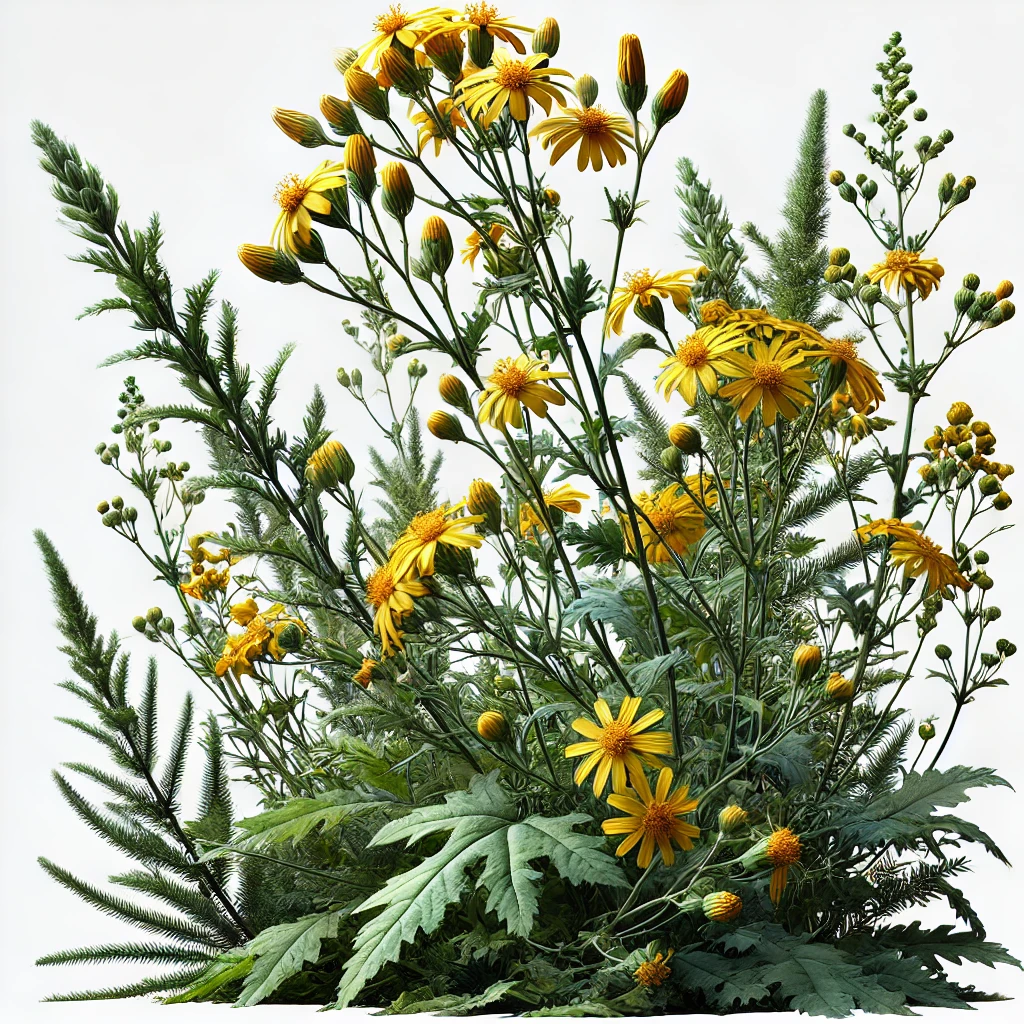Alpine Ragwort (Senecio nemorensis L.)

Overview
Alpine ragwort, also known by various names, is a plant that can be confused with other species, such as Senecio aureus. It belongs to the Asteraceae family and is noted for its diverse range of chemical constituents, particularly pyrrolizidine alkaloids (PAs), which have significant implications for human health.
Medicinal Activity
Alpine ragwort exhibits several activities, some of which pose serious health risks:
• Carcinogenic: The presence of certain alkaloids raises concerns about cancer risk.
• Hemostatic: It may aid in stopping bleeding, though this effect is outweighed by its risks.
• Hepatotoxic: Known to cause liver toxicity and damage due to its alkaloid content.
• Hypoglycemic: May lower blood sugar levels, which could be beneficial for diabetes management.
• Hypotensive: Potentially lowers blood pressure, although this effect is not well-studied.
• Carcinogenic: The presence of certain alkaloids raises concerns about cancer risk.
• Hemostatic: It may aid in stopping bleeding, though this effect is outweighed by its risks.
• Hepatotoxic: Known to cause liver toxicity and damage due to its alkaloid content.
• Hypoglycemic: May lower blood sugar levels, which could be beneficial for diabetes management.
• Hypotensive: Potentially lowers blood pressure, although this effect is not well-studied.
Therapeutic Indication
Alpine ragwort has been indicated for various conditions, although caution is advised due to its toxicity:
• Bleeding Disorders: Suggested use for managing bleeding, but risks outweigh benefits.
• Diabetes: Hypoglycemic properties may help manage blood sugar levels.
• High Blood Pressure: Possible hypotensive effects, though not thoroughly validated.
• Hyperglycemia: May help in conditions of high blood sugar.
• Odontosis: Suggested for dental issues, although details are limited.
• Uterostimulant: May stimulate uterine contractions, warranting caution.
• Bleeding Disorders: Suggested use for managing bleeding, but risks outweigh benefits.
• Diabetes: Hypoglycemic properties may help manage blood sugar levels.
• High Blood Pressure: Possible hypotensive effects, though not thoroughly validated.
• Hyperglycemia: May help in conditions of high blood sugar.
• Odontosis: Suggested for dental issues, although details are limited.
• Uterostimulant: May stimulate uterine contractions, warranting caution.
Prepration & Usage
Due to the risks associated with alpine ragwort, recommendations on dosage are contradictory. Some sources suggest steeping 1 teaspoon in hot water for several minutes and consuming several times a day as needed. However, this contradicts other warnings that advise against internal use entirely.
Safety & Considerations
Alpine ragwort is associated with significant health risks, primarily due to its pyrrolizidine alkaloids:
• Hepatic Veno-Occlusive Disease: Consumption can lead to serious liver conditions, including veno-occlusive disease, characterized by abdominal pain, vomiting, and fluid retention (ascites).
• Toxicity Levels: Symptoms of liver damage and cirrhosis have been observed even at low doses (0.5 mg/kg to 3.3 mg/kg).
• Potential Fatality: Severe cases of intoxication can be fatal, making it crucial to avoid consumption.
The presence of alkaloids in Senecio species presents a significant risk, necessitating caution and potential avoidance in medicinal applications.
• Hepatic Veno-Occlusive Disease: Consumption can lead to serious liver conditions, including veno-occlusive disease, characterized by abdominal pain, vomiting, and fluid retention (ascites).
• Toxicity Levels: Symptoms of liver damage and cirrhosis have been observed even at low doses (0.5 mg/kg to 3.3 mg/kg).
• Potential Fatality: Severe cases of intoxication can be fatal, making it crucial to avoid consumption.
The presence of alkaloids in Senecio species presents a significant risk, necessitating caution and potential avoidance in medicinal applications.
Conclusion
In conclusion, while alpine ragwort has traditional uses in herbal medicine, its serious health risks due to toxic alkaloids overshadow its medicinal benefits. Users are advised to exercise extreme caution and consult healthcare professionals before considering its use.
